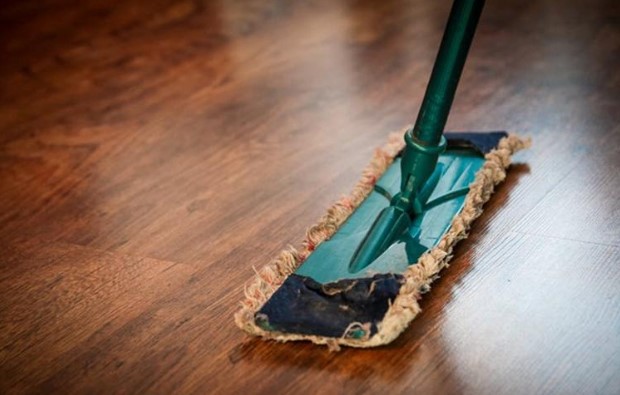
Do you know how often you’re supposed to clean your house? The answer is a lot more often than you realize. According to Good Housekeeping’s guide to cleaning house, there’s a long list of things you’re supposed to do every day. Making your bed, doing your laundry, and sanitizing your bathroom are just three of these daily chores. Meanwhile, they suggest you’re supposed to clean appliances like your fridge and microwave once a week and vacuum your vents every month. If, after checking in with the rest of their guide, you feel a little self-conscious about your lifestyle — don’t worry. With spring just around the corner, it’s the perfect time to jump on the cleaning bandwagon and bring your home back up to snuff. Keep scrolling if you aren’t sure where to start. This guide will help you cover the basics of your spring cleaning.
Use the three-pilede-cluttering method.
Most of the time, clutter is what’s stopping you from hitting those daily cleaning chores. Take the time this spring to target areas of your home that naturally seem to collect things. Papers, bills, knick-knacks, and patty-whacks—the random detritus of daily living that finds its way into drawers, onto tables, and in the corners. Not sure where to begin? Start by choosing one room and focusing solely on its contents. Go through the clutter and separate it into three piles: keep, donate/sell, and throw away.
Keep: Reserve this pile for anything you use regularly and intend to keep in your home.
Donate/Sell: This pile is for duplicate items (like multiple stereos or kitchen utensils) that are still in good condition and that you haven’t used in more than six months. Depending on their worth and their condition, you may only be able to drop them off at a charity. For large appliances or pieces of furniture, you may be able to sell them on Craigslist to earn a few bucks.
Throw away: This is for anything you don’t want or need and that can’t have a second life with another person. Collect broken, dirty items in this pile. While things like paper can go in the regular trash, check in with your local municipality to learn how to dispose of electronics, chemicals, and other unusual goods.
Once you’re done with one room, apply this three-pile method to the next one until you’ve de-cluttered your entire house.
Go natural: Now devoid of clutter, your house is ready for a scrub. You might reach for the chemicals first, thinking potent bleach and other abrasive disinfectants will clean your home better. That’s just not the case. Natural alternatives to these cleaning solutions can leave your home just as clean, while leaving behind none of the hazardous residues that can harm children or pets. Baking soda, salt, and vinegar are common ingredients in the most basic house cleaners, and they’re much cheaper than commercial products. Check in with a homemade cleaning guide to find out how to make your own mixture.
Be prepared for the unexpected.
Spring cleaning doesn’t always look like what they show you in a commercial for Windex or Mr. Clean. Rarely can you clean your messes up in a single spray of cleaning solution or with one swipe of a patented cleaning cloth. Sometimes the mess needs some serious elbow grease and time to undo. And sometimes, the big clean reveals a larger problem within the home.
You might find black mould peppering the baseboards after finally getting to the clutter in the corner of your basement rec room. Maybe your thorough cleanup of the garage exposes a giant crack in the foundation of your home. Or perhaps, once everything’s sparkling, your spring cleaning highlights the fact that you need to update your old and broken blinds.
Most people don’t think of having a spring cleaning budget when they start out. Cloths, dusters, and soap don’t cost too much money. But when you’re faced with the sudden need to tackle black mould, your spring cleaning turns into an expensive renovation you can’t ignore. If you aren’t sure how you could cover a repair of that size, check in with the financial experts from MoneyKey. They have helpful money saving resources that include articles on budgeting tips, savings hacks, and the value of setting realistic goals. They go over multiple proven budgeting methods, like the envelope budget or the five-point plan, so you can find a technique that works for your lifestyle and your goal. Go through these articles to learn how you can start saving to cover unexpected household repairs.
With a little bit of help, any task is manageable. Whether your spring cleaning leads to expensive repairs or just an industrious weekend removing clutter, let this guide help you make the most out of your spring cleaning. Arm yourself with natural cleaning supplies, take advantage of the three-pile method, and be prepared for the unexpected.